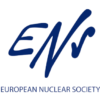At the location of the Nuclear Power PlantThermal power plant, primarily used for electricity generati... Greifswald near Lubmin (East Germany), five pressurized water reactors of Soviet design with an electric power of 440 MWMegawatt, million times the power unit of watt (W). 1 MW = 1... each were in operation from 1973 to mid-1990:
- KGR-1: 3rd Dec. 1973 to 18th Dec. 1990, generated electrical energyAbility to do work or diffuse heat. The unit of energy is th...: 41 TWh,
- KGR-2: 2nd Dec. 1974 to 14th Feb. 1990, generated electrical energyAbility to do work or diffuse heat. The unit of energy is th...: 40 TWh,
- KGR-3: 6th Oct. 1977 to 8th Feb. 1990, generated electrical energyAbility to do work or diffuse heat. The unit of energy is th...: 36 TWh,
- KGR-4: 22nd Jul. 1979 to 2nd Jun. 1990, generated electrical energyAbility to do work or diffuse heat. The unit of energy is th...: 32 TWh,
- KGR-5: 26th Mar.1989 to 29th Nov. 1989, trial operation.
In 1990 three further units of the same power were in operation. Due to the safety deficit compared to western standards the reactors 1 to 5 were shut down in 1990 and the construction of the units 6 to 8 was suspended. The decommissioning work for the plant has started end of June 1995.
At the time the nuclear power plantThermal power plant, primarily used for electricity generati... units were switched off, there were a total of 5037 irradiated fuelSee 'nuclear fuel'. elements at Lubmin in Units 1-5 of the nuclear power plant and the interim store for spent fuelSee 'nuclear fuel'.. At Greifswald Nuclear Power PlantThermal power plant, primarily used for electricity generati... there were an additional 860 new fuelSee 'nuclear fuel'. assemblies. 235 only partly-used fuelSee 'nuclear fuel'. elements from Unit 5 were sold to Paks nuclear power plantThermal power plant, primarily used for electricity generati... in Hungary. The sale of the entire new and only partly irradiated nuclear fuelIn accordance with the definition of the German Atomic Energ... was completed in 1996.
Since there was and still is no final storage facility available in Germany for these materials, the only option is to temporarily store the spent nuclear fuel in the appropriate CASTOR® type casks in an interim storage facility.
With the granting of approval for storing spent nuclear fuelIn accordance with the definition of the German Atomic Energ... in the dry cask storage hall of the Interim Storage Facility North (ISN) on 5th November 1999 by the Federal Office for Radiation ProtectionRadiation protection deals with the protection of individual..., it was possible to begin with disposal of nuclear fuelIn accordance with the definition of the German Atomic Energ... from the nuclear power plants in Greifswald and Rheinsberg to the extent provided for.
On 21st May 2006, the last CASTOR® cask with nuclear fuelIn accordance with the definition of the German Atomic Energ... from EWN was brought from Unit 3 to the ISN. At the moment, there are 74 CASTOR® containers in the ISN, 65 of them from the nuclear power plants in Greifswald (61) and Rheinsberg (4).
In April 2012, it was reported that the operator was planning a combination of immediate dismantling and safe containment in order to save costs: most of the plants should be demolished immediately, but the buildings should remain standing for another 50 years and will only be dismantled when the radionuclides have diminished.
In 2015 there was a change in strategy, deciding to demolish all buildings by 2028.
